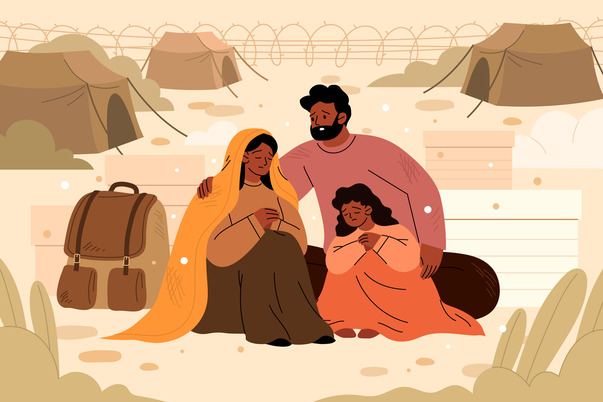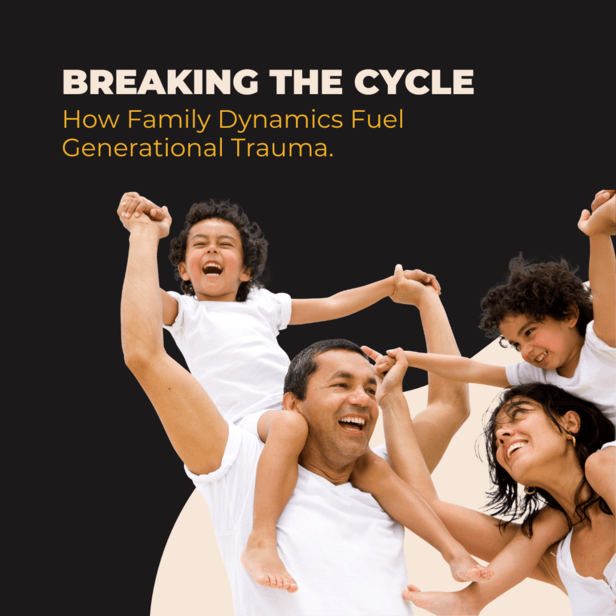CATEGORIES
#Health and Wellness #Social Impact #Well-BeingOverview:
- Generational trauma is a complex phenomenon having physical, mental, and emotional imprints on generations.
- Family dynamics are the pattern that governs our relations, behaviors, and interactions.
- Intricating a connection between family dynamics and trauma cells for healing is crucial.
- Addressing generational trauma often requires conscious effort to break these cycles.
Intergenerational Trauma
The ideology of collective pain that passes from one generation to another is called generational trauma. The response displayed as a result of these devastating incidents such as war, natural calamities, ethnic cleansing, or loss. The symptoms often include adverse physical, mental, behavioral, and emotional outcomes. This grief or trauma transfers from one generation to another, and influences the emotional and behavioral patterns of future families. Analyzing the basic channels through which these symptoms are displayed in our daily lives is crucial. Hence, family dynamics can empower us to overcome these traumatic episodes and form healthy relations.
Causes of Generational Trauma
The three main causes of generational trauma include extreme events, abuse, violence, or prolonged periods of discrimination and suffering. It can be displayed in behavioral patterns, emotional responses, family dynamics, and epigenetic changes. Below are major causes of generational trauma to help you identify it better:
- War
Holocaust Survivors’ Descendants are a profound example, the war crimes had a severe impact on survivors and their descendants. The community as a whole inherited coping mechanisms, fears, anxiety, depression, PTSD, and heightened stress responses.
- Systematic Oppression & Genocide
The ongoing genocide in Gaza presents the picture of disturbed community dynamics for future generations. The long-standing systematic oppression and loss have become central to the collective identity of Palestinians. Ultimately imposing horrifying physical, emotional, mental, and epigenetic impacts.
- Black Americans
African Americans suffered the legacy of slavery. Hence, racial trauma manifests in the form of cycles of violence, mental health issues, and discrimination.
- Family Violence and Neglect
People who suffer severe abuse or neglect during childhood may unintentionally pass the same trauma.
This transmission can be done in different forms such as learned behaviors and coping mechanisms. A parent who experienced neglect may have difficulty forming secure emotional attachments with their children. This impacts children’s emotional development and self-worth, perpetuating a cycle of trauma and emotional instability.

Family Dynamics: Pathways of Pain
Intergenerational trauma can manifest in subtle ways and doesn’t necessarily have to be displayed as big or unique events. Trauma often gets attached to individuals and creates deep-seated family issues influencing family dynamics. Family dynamics are the patterns of interactions, communication, roles, and bonding of a family both in external and internal settings. These patterns are often unconscious, long-standing, and subtle in display which also makes them the biggest pathways of passing trauma. The following are major characteristics of family dynamics that mold individuals and families in the long run.
Roles and Responsibilities: Predetermined roles (e.g., good child, provider, peacemaker, rebel) create disparities and impact family bonding. This shapes an individual’s belief about oneself and impacts their contribution.
Communication Patterns: Communication is a big part of our life and the style we use depicts the level of trust and bond. Families or communities that practice open communication ensure the growth of empowered generations. Whereas behavioral or mental distress is formed in rigid and abusive environments
Emotional Connections: It is pivotal for families to have positive emotional connections that foster support and resilience. On the other hand families with conservative and toxic relations create insecurity, emotional distress, and personality disorders.
Conflict Resolution: Conflict management is a big indication of family dynamics, often observed healthy families can navigate conflicts strategically. Whereas detached or dysfunctional families show signs of detachment, anger, avoidance, aggression, abuse, and control. Unresolved conflicts and negative emotions can dwell further and carry the hurt that continues.
Power Dynamics: The balance of power within a family is a significant characteristic of family dynamics. Rigid families or communities have restrictions and hierarchies based on role, gender, and age, that impose barriers on free will.
Adaptability: The ability to make a comeback as a family in adversity is also important. Families that have strong bonds and mutual trust are resilient in the face of different life phases. Whereas conservative families often struggle to succeed as a whole and often result in separations.
Parenting Styles: Another factor of family dynamics is parenting styles. The most prominent styles practiced are authoritative, neglectful, abusive, and permissive which impact children’s development and behavior.
Socialization and Identity Formation: An individual’s identity is greatly or majorly impacted by their surroundings. Children with negative or too little social circles develop unhealthy emotional responses. These are often observed as low self-esteem, lack of confidence, anxiety, and extreme detachment.
These physical and mental impacts change an individual’s response to stimuli, level of anxiety, stress, and depression altogether changing their characteristics. As these victims start families or communities, they carry the “survival skills” they adopted from growing up in unsafe environments. Hence are then passed down to their children, their children’s children, and so on.
Echoes of the Past: Mechanisms of Transmission
For people, the primary and basic contact of learning emotions, beliefs, and behavior is often family. If the ancestors have faced any kind of trauma such as strict parenting style, abuse, violence, and neglectful behaviors. The impact can majorly disrupt family dynamics and create an environment that does not support or nurture positivity. Instead, cultivates generational trauma or emotional struggles resulting in weak or unsure adults with unhealthy attachment styles.

So to make a point it can be said that family dynamics both consciously and unconsciously act like the roads. They can transfer and spread the trauma in our daily lives in the form of behavior, emotional responses, and relational patterns. Allowing the grief to seep into daily life in various forms—such as anxiety, conflict, or unhealthy coping mechanisms. Hence, identifying the factors governing and strengthening trauma in our society can ease the journey toward the healing of generations.
Strategies to Overcome: Intergenerational Trauma
There is a great need for intentional healing efforts such as therapy, cultural reclamation, and social support. These efforts are essential to address long-standing, unconscious trauma and ensure a positive legacy for future generations. Below are some strategies we can practice to resolve generational trauma from its pathways.
Acknowledge the Past
Acknowledging and confronting what haunts us is a crucial step to recovery. Often we associate pain or grief with people or identities such as commonly associating abuse and violence with gender. Hence, it is necessary to distinguish perpetrator identity from Gender, role, relation, religion, or community. An abusive male counterpart or parent should not confine us to being biased towards males or vice versa. Similarly, in the face of war and genocide, distinguishing Jews or Muslims from Zionism and islamophobia serves to greater peace.
Seek Professional Support
Intergenerational trauma is a complex experience to navigate through for both individuals and communities. Taking the help of a therapist or counselor specializing in trauma-informed care is necessary. Be it advice, medication, or group therapy professionals can provide tailored help unique to your family or community trauma patterns.

Establish Healthy Boundaries
When overwhelmed by traumatic episodes of the past, it is better to set healthy boundaries to process your emotions better. This will ensure safe emotional and physical space for both yourself and others. Prevents toxic and abusive patterns, allows space for self-expression, and saves oneself from chronic guilt and regret.
Overcoming Modeling Behavior
Children often imitate the behavior displayed by elders such as the famous example of coping parenting style. Developing anger, avoidance, emotional withdrawal, substance abuse, and adopting control to exercise autonomy. Practicing mindfulness, meditation, and self-evaluation can help in analyzing and staying grounded in reality – instead of the brain’s flight freeze mode.
Communicate & Encourage Empathy
Analyze and evaluate your communication style often families with unresolved trauma may struggle with open communication. This can result in emotions of shame, denial, and lack of self-expression and creates unhealthy attachment styles. Hence identifying verbal and non-verbal signals is crucial.
Conclusion:
It is crucial to intricate connections between family dynamics and generational trauma. As they can either trap us in a cycle of hurt or guide us toward healing and resilience. By breaking the silence we ensure happier futures for ourselves and our children.


